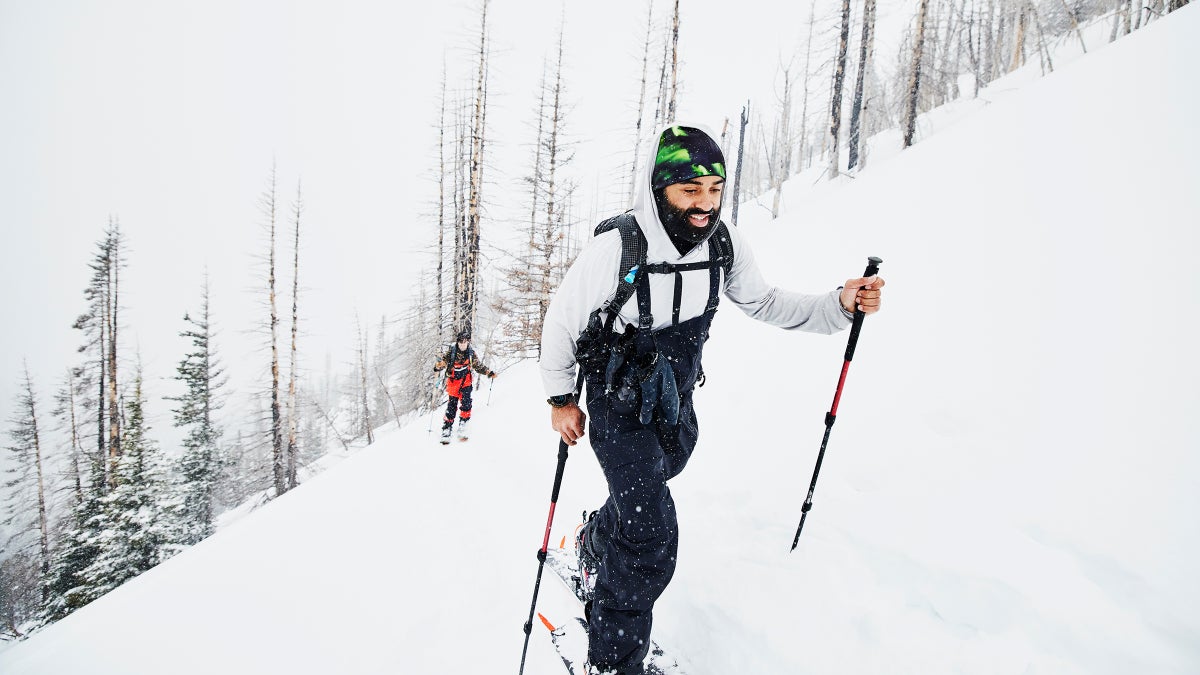No products in the cart.
Outdoor Adventure
How Much Money Should You Spend on Ski Poles?
Get full access to Outside Learn, our online education hub featuring in-depth fitness, nutrition, and adventure courses and more than 2,000 instructional videos when you
sign up for Outside+.
Welcome to Ask a Gear Editor, our monthly column where we answer readers’ most puzzling gear questions. Have a burning question of your own? Become an Outside+ member to ask an Outside expert for advice.
There’s such a huge range in the pricing of ski poles these days. How do I know how much money I should spend on a quality pair that will last me a long time?
Of all the pieces in a typical ski kit, poles are the easiest to overlook because they’re often the cheapest: you can spend as little as $40 on a new pair for adults. But as with anything in the ski world, the price range is broad, with the most expensive poles on the market topping out at around $320. How much should you spend? It depends on how often you ski, what terrain you plan to ski, and whether you mostly hit chairlifts, skin up the hill, or tour in the backcountry.
If you primarily ski at a resort, or only get to the slopes a few weekends a year, buying used is always an excellent option: it’s more sustainable, much cheaper, and gives you some vintage street cred. But buy carefully, because used poles can be damaged from prior use. (To determine whether they’re kaput, look for visible creases on the shafts, which indicate that they’re on the verge of snapping.)
If you tour in the backcountry often, or can’t find any quality options at your local used-gear shop, invest in a new pair of poles. In these situations, the first characteristic to consider is material, which impacts durability, weight, and price.
The most popular materials are aluminum, carbon, carbon alloys, and bamboo. Aluminum is strong, cheap, and malleable, tending to bend before it snaps. My friend recently forgot to lift her aluminum Scott 540 P-lite poles at the top of the chairlift; they ground against the packed snow and bent 100 degrees but didn’t break. The downside, however, is that aluminum is the heaviest of all pole materials. Some higher-quality aluminum options are lighter than others (and pricier), but none are quite as feathery as carbon. And although carbon is super light and strong, it’s usually much stiffer than aluminum, meaning it won’t bend and is easier to break in two. This is something to consider depending on where you ski: while carbon poles are perfect for heading uphill quickly, they’re not so great in the backcountry, where broken poles would mean a really hard trek out. Finally, bamboo poles are making a comeback—they’re very light, eco-friendly, strong, and typically cheaper than carbon—but their long-term durability hasn’t been proven in comparison to the others.
Aside from the material of the shafts, you’ll also want to consider features like length adjustability, quick-release or removable pole straps, and extra-long grips. If you’re planning on touring, telescoping poles or those with a long grip are a must, so you can change the length of the pole either by physical extension or by moving your hand up and down the shaft. It’s dangerous to ski with your pole straps on in the backcountry, in the chance you get caught in an avalanche, and many find that pole straps are an unnecessary annoyance on the walk up. So while you can spend slightly more on a pair with removable straps, you can always just cut them off yourself.
Now on to the question of which to choose. I’ve had friends spend upward of $150 on carbon poles that have snapped against trees on the downhill. If you like to huck cliffs or shred tight trees, especially in the backcountry, I’d recommend a high-quality, adjustable (or a pair with a longer grip), lighter-weight aluminum pole (in the $100 range) or a carbon-aluminum composite (around $130), the latter of which mixes the perks of low weight and durability for a slight price premium. If you’re hard on your gear, or if you spend most of your time in the the resort or the park, then aluminum fixed-length poles are the way to go ($50 to $70).
On the other hand, let’s say your main concern is going uphill, fast, but mostly on sidecountry or in-bounds terrain. I would look to adjustable, pure carbon poles. They’re more expensive (typically starting at $150 for a pair that’s both carbon and adjustable) but super lightweight and tough. Some advanced skiers prefer carbon at the resort as well, because such light poles are slightly quicker to bring forward into the next turn and cause less strain on your arms and upper body. I personally would rather carry a few extra grams than risk breaking my poles.
The bottom line: most skiers don’t need to shell out more than $130 on poles and can likely be served with something under $100. Chances are decent that you can find a light pair at your local used-gear shop, so check there first. But at the end of the day, the majority of folks should look to aluminum or aluminum-carbon-composite poles, with features like adjustability and quick-release straps, depending on your preferences and if you’re skiing in the backcountry.
Source link

